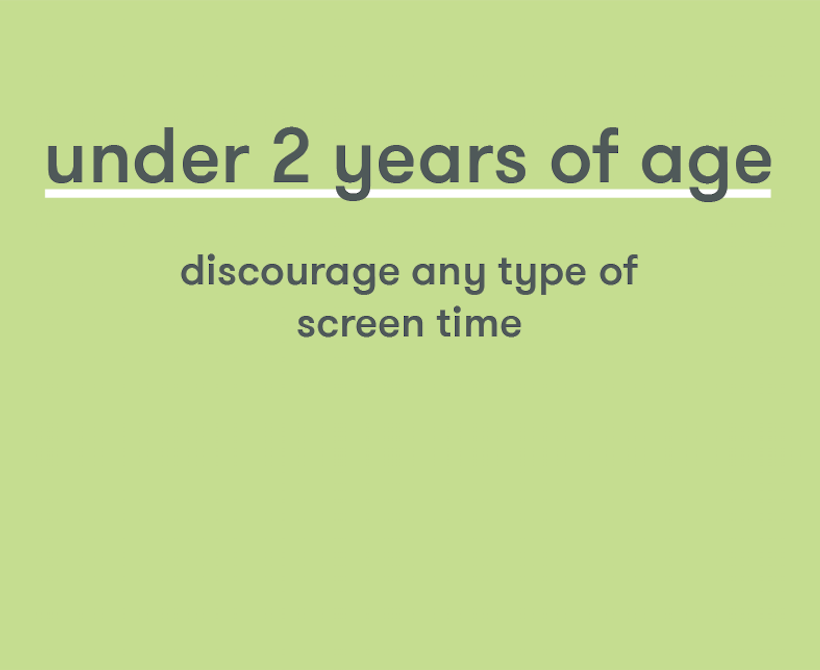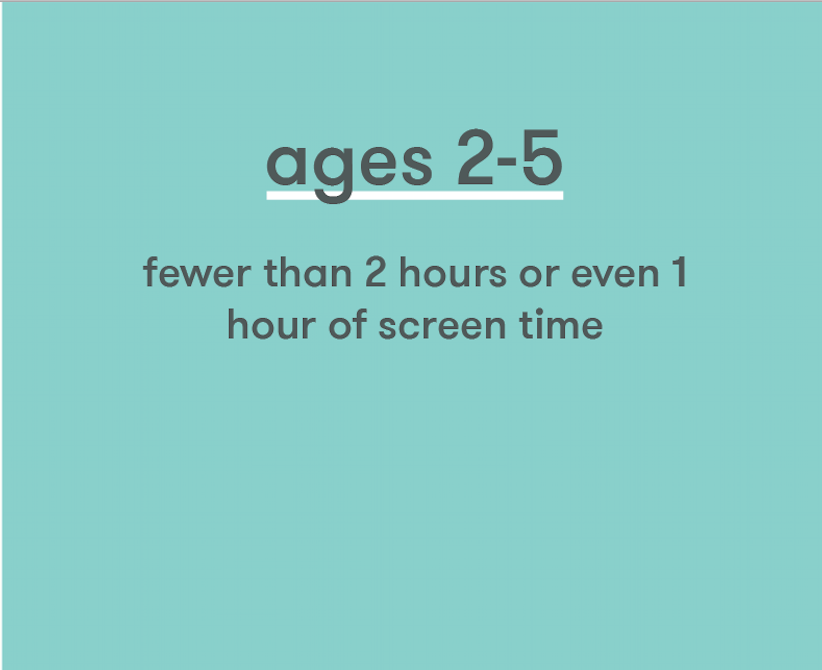Technology lives in every corner of our lives; our offices, our homes and our schools. There are a variety of technologies everywhere and even our children are living in and will continue to grow in a world where tech will grow with them. But is media and technology beneficial for children?
In this post, we hope to share information about how caregivers can make mindful choices about media exposure for their children.

What does research and guidance tell us?
Why does technology appeal to us in the way it does? Technology appeals to humans because we have a genetic bias towards information that is visually presented. The human brain loves visual orientations therefore television, apps, videos, and computer programs are enticing. (Moore & Perry, n.d.). Though it is a relatively new field, there has been a lot of research done on the use of technology and its relationship with our lives (with a lot more research left to be done). If you look at the research (table below), you may leave feeling a bit unsatisfied as you’ll find that there are a lot of mixed findings.
| Pros for technology use | Cons for technology use |
|---|---|
| – When screens are interactive, they can be beneficial for children and support responsive interactions between caregivers and children. | – There is a transfer deficit when young children learn from screens rather than in real life. It’s easier to recall and learn from real life than screens. |
| – Technology can extend learning such as exposing children to animals, objects, people, landscapes, activities, and places that they may not be practical to experience in person such as exploring the geography of Antarctica or the Moon. | – There is a relationship between media use and child obesity |
| – Technology can also help children save, document, revisit, and share their own real-life experiences through the images, stories, and sounds they may have captured. | – There are negative effects on attention associated with very high media usage (more than 7 hours per day, including background TV) |
| – Early exposure to age-appropriate programs designed around an educational curriculum is associated with cognitive and academic enhancement. | – Studies have also shown a relationship between quantity of TV viewing and sleep problems. |
| – Background television can be disruptive as the noises, content, and pace can be cognitively demanding as well as distracting and incomprehensible to children. | |
| – Traditional videos (non-interactive) are not educationally valuable for children under 3 years old |
(NAEYC & FRC, 2012, Lauricella, et.al, 2010, Barr, 2013,Wartella, & Anderson 2008, White House Task Force on Childhood Obesity 2010; Birch, Parker, & Burns 2011, Foster & Watkins, 2010, Thompson, D. A., & Christakis, D., 2005, Thompson, D. A., & Christakis, D., 2005, Kirkorian, et. al., 2009, Lillard, A. S., & Peterson, J. 2011, Schmidt,2011, Anderson and Hanson, 2010)
Recommendations on amount of exposure of technology to young children according to American Academy of Pediatrics (2011b, 2016):



What’s the verdict?
There is no real answer here, but with taking into consideration the research and recommendations shared above as well as what’s developmentally appropriate and best practices for nurturing children, we do have some thoughts to share as you decide.
- Technology never does replace real-life experiences that a child can have. Virtually picking apples cannot replace the experience of reaching up and twisting an apple off a tree, then being able to smell and taste it.
- Technology can be used as a supplemental source of learning and engagement as long as it targets the right needs and is utilized tangentially to actual experiences (f.e use an apple picking app after they have experienced the real deal).
- Look for apps or media that promote active learning (your child is mentally active, exploring an age-appropriate challenge).
- Look for apps/games that are self correcting (a child doesn’t need to be told they are wrong, they will know it themselves and be able to continue to try – similar to Montessori materials)
- Look for apps that are enjoyable not because of the commercializing the app may use (the visual appeal, using candies or characters, etc) but rather because the game itself is engaging.
- When you utilize media or apps, be mindful of what the app is really providing your child. Each app or piece of technology is the representation of an idea of how children should and can learn created by a team of people, so really ask yourself, what is my child getting from this app? Is it giving them what they need? Is it developmentally appropriate? Can the same skill be practiced in a real-life setting?
- Cameras can be a great tool to capture, record and revisit observations and experiences a child may have had.
- Learn more about an app or media before downloading or watching. The Common sense media website is a great tool for this!
In conclusion, all screens are not created equal. Technology not only penetrates our lives, but also permeates the evolving realm of education, especially within the context of COVID-19 and many children having to attend classes remotely. As we move forward, we just have to be cautious of how we use technology with our children and how we balance it with other experiences from which children learn and grow.
In the end, all we really want is to strive to make sure our children have a well-balanced set of experiences to help them grow into healthy and capable adults. If you have any questions or need anything from us, please reach out, we are here for you!
Till Next Post,
Aleezeh Makani
Ethos Early Learning Center Educator
Ethos is a new mindset and model for child care and early education for children aged 6 weeks to 5 years in the South Boston, MA Area. We pride ourselves on our dedication to serving our students and families in ways that are research-driven and nurturing to who they are and can become. Request more information online here!
Lauricella, A. R., Pempek, T. A., Barr, R., & Calvert, S. L. (2010). Contingent computer interactions for young children’s object retrieval success. Journal of Applied Developmental Psychology, 31(5), 362-369.
Anderson, D. R., & Hanson, K. G. (2010). From blooming, buzzing confusion to media literacy: The early development of television viewing. Developmental Review, 30(2), 239-255Barr, R. (2013). Memory constraints on infant learning from picture books, television, and touchscreens. Child Development Perspectives, 7, 205–210. doi: 10.1111/c
Burns, A., Parker, L., & Birch, L. L. (Eds.). (2011). Early childhood obesity prevention policies. National Academies Press.
Foster, E. M., & Watkins, S. (2010). The value of reanalysis: TV viewing and attention problems. Child Development, 81, 368–375.
Funk et al. 2009; Campaign for a Commercial-Free Childhood 2010
Reed, J., Hirsh-Pasek. K. and Golinkoff, R. (2017). Learning on hold: Cell phones sidetrack parent-child interactions. Developmental Psychology, 53, 1428-1436. doi: 10.1037/dev0000292. Epub 2017 Jun 26.
NAEYC & Fred Rogers Center for Early Learning and Children’s Media. Technology and Interactive Media as Tools in Early Childhood Programs Serving Children from Birth through Age 8. (NAEYC, 2012).
Linebarger, D. L., Piotrowski, J. T., & Lapierre, M. (2009, November). The relationship between media use and the language and literacy skills of young children: results from a national parent survey. In NAEYC Annual Conference (pp. 18-21).
Heather L. Kirkorian, Ellen A. Wartella, & Daniel R. Anderson. (2008). Media and Young Children’s Learning. The Future of Children, 18(1), 39-61.
Kirkorian, H. L., Pempek, T. A., Murphy, L. A., Schmidt, M. E., & Anderson, D. R. (2009). The impact of background television on parent–child interaction. Child Development, 80, 1350–1359.
Lillard, A. S., & Peterson, J. (2011). The immediate impact of different types of television on young children’s executive function. Pediatrics, 128, 644–649.
Schmidt, M. E., Pempek, T. A., Kirkorian, H. L., Lund, A. F., & Anderson, D. R. (2008). The effects of background television on the toy play behaviors of very young children. Child Development, 79, 1137–1151.
Thompson, D. A., & Christakis, D. (2005). Among children less than 3 years of age the association between television viewing and irregular sleep schedules. Pediatrics, 116, 851–856. doi: 10.1542/peds.2004-2788.
Moore, K., Dr., & Perry, B., Dr. (n.d.). Using Technology in the Early Childhood Classroom. from https://www.scholastic.com/teachers/articles/teaching-content/using-technology-early-childhood-classroom/